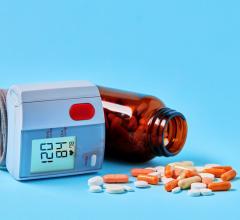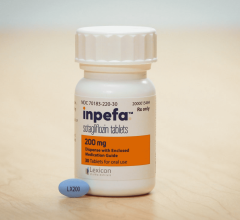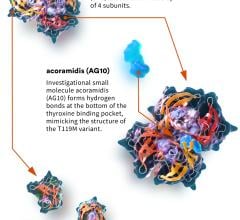March 3, 2010 – Pharmaceutical companies will struggle to profit from the cardiovascular disease (CVD) market over the next decade despite growing drug usage, according to new market research from Datamonitor.
The independent business analyst predicts the CVD pharma market will grow from $99 billion in 2008 to $107 billion in 2018. However, patent expirations and generic competition will have a major impact. Datamonitor expects AstraZeneca and Novo Nordisk to emerge as the only major CVD pharma companies to generate positive sales growth over the period.
Drug Usage vs. Sales
The strong growth in CVD drug usage in the developed world will be driven by the increase in patient populations, early diagnosis and early initiation of drug therapy as healthcare providers target the CVD complications associated with an increasingly obese population. Big pharma will struggle to capitalize from this surge in CVD drug usage as the increase in usage will be concentrated in the generic sector as budget control becomes the key driver in healthcare policy.
Datamonitor expects the CVD market to have a compound annual growth rate of just 0.8 percent from 2008-2018.
“The CVD market is one of the most mature pharma markets and the traditional drivers – hypertension and dyslipidemia – will be heavily impacted by patent expiries and generic competition,” said Anthony Nealon, Ph.D., report author and senior healthcare analyst at Datamonitor.
The Looming Patent Cliff
The two largest drugs in the entire pharma market – Lipitor (atorvastatin, Pfizer) and Plavix (clopidogrel, Bristol-Myers Squibb/Sanofi-Aventis) – are both due to lose patent protection in 2011. Generic competition is also expected to impact other blockbuster drugs in the CVD market such as Cozaar (losartan, Merck), Diovan (valsartan, Novartis) and Actos (pioglitazone, Takeda). Weak development pipelines in hypertension and dyslipidemia will not be able to replace revenues lost following the introduction of generic competition.
“This is due to current marketed drugs offering a wide range of therapy options for treatment, plus, there are no remaining significant clinical unmet needs to spur on development candidates” said Nealon, who is based in London.
Diabetes, Thrombosis Will be Growth Areas
Decline in the traditional therapy areas will be offset by growth in diabetes and thrombosis as new drugs able to meet significant unmet clinical needs for patients reach the market. The pipelines for the two therapy areas are forecast to add more than $20 billion to sales in the seven major markets by 2018.
“This market growth will see diabetes become the largest therapy market in the seven major markets* with sales of $37 billion in 2018,” said Nealon. The seven major markets include the United States, Japan, France, Germany, Italy, Spain and the U.K.
Generating Positive Sales Growth
Despite the fall in the overall dyslipidemia market, Datamonitor forecasts over the 2008-2018 period that AstraZeneca will generate strong growth from its dyslipidemia drug Crestor (rosuvastatin). The company has been highly successful in differentiating Crestor from other drugs within the therapy area on the back of the comprehensive GALAXY clinical trial program. The company’s proven excellence in clinical development has also led to it having the strongest late-stage CVD development pipeline with Brilinta (ticagrelor, AstraZeneca) and Onglyza (saxagliptin, AstraZeneca/Bristol-Myers Squibb), which are both forecast to generate blockbuster sales.
Novo Nordisk is the only other CVD company forecast to generate positive sales growth during the 2008-2018 period. The company will be able to capitalize on its market-leading position in insulin therapy and defend the position due to the unique characteristics of the insulin market.
“Insulin therapies offer a highly defendable position to generic entries. This is due to the high degree of brand and company loyalty generated by the significant patient and physician support services offered by the three leading insulin companies. This sets significant barriers to new entrants and Novo Nordisk, as the leading insulin company, is positioned to benefit the most from this market,” Nealon said.
For more information: www.datamonitor.com


 July 10, 2024
July 10, 2024 








